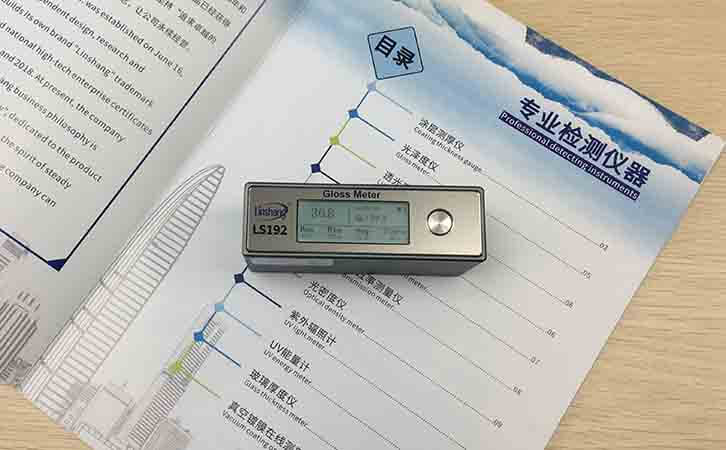Gloss Performance and Gloss Meter
1.Gloss and luxury
A few years ago, car owners were still showing off how smooth and shiny their car surfaces are. Some car owners even say that their car surface is brighter than the bathroom mirror. But this is a long time ago. Today, more and more people choose cars with matte paints and varnishes. It is things that are scarce and expensive. These paints have become the hallmark of luxury cars. In the luxury car market, this type of car is very popular. This illustrates the importance of the correct choice of color and gloss (evaluated by a gloss meter) for a business.
2.Gloss performance
In physics, the angle of incidence is equal to the angle of reflection, but this statement is too simplified to apply in all cases. When light strikes a completely smooth surface, the statement that the exit angle is equal to the incident angle is absolutely correct. If the incident light is not affected by any unevenness on the surface, it can also exit unobstructed at an appropriate angle. But this kind of situation is rare. In terms of glossiness, our perception of the glossiness of different object surfaces is usually different.
When using the gloss meter for gloss measurement, the surface gloss can be divided into high gloss, matte and velvet matte. High gloss means that the object surface is smooth and completely polished. For objects with high gloss, the light projected onto the object surface is emitted directly in the main reflection direction. In this case, the angle of reflection is equal to the angle of incidence. For matte or velvet matte surfaces, light is scattered in different directions. In this way, the object is not reflected, but is perceived as blurred by the human eye.
Gloss meters are usually based on directional reflection. The detector records the angle of light reflection and analyzes the glossiness of the object surface by the recorded beam intensity. To be able to distinguish all surfaces and measure them correctly, some gloss meters have different measurement ranges. In gloss measurement, these measurement ranges are called measurement angles and are divided according to the gloss level.
There is a clear difference between gloss measurement and color measurement. When making color measurements, the focus is on the diffusely reflected portion of the entire surface. The gloss measurement is mainly focused on the incident light reflected on the object surface at a certain angle.Usually we use a 60 degree angle gloss meter to measure the sample. If you measure with a 60-degree anglegloss meter and the gloss is greater than 70GU, a 20-degree angle should be used. If you measure with a 60-degree angle gloss meter and the gloss is less than 20GU, you must use an 85-degree angle. In order to compare the measurement results, the measurement angle cannot be changed randomly during the test. However, with the continuous improvement of the resolution of the gloss meter, the 60-degree angle gloss meter can currently meet the needs of measuring gloss for most objects.
